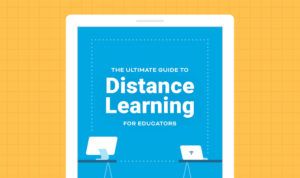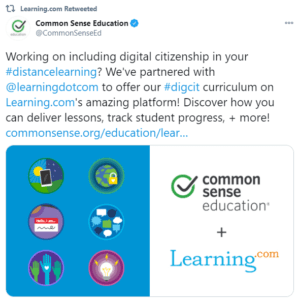As we pause for the holidays, and look forward to turning the calendar to 2021, it is a good time to reflect on the past twelve months.
Collective Resilience
2020 was a very challenging year. Tens of millions of school and district staff and administrators, teachers, parents and students were thrown into disarray in the Spring of 2020. The disruption continued into the Fall and likely will be felt through the rest of this school year.
For me, the overarching message from the year is one of Resilience. Let’s recognize the magnitude of what the K-12 community has been through. Last Spring, immediately and with no preparation or warning, districts had to switch their entire model for delivery of instruction. Years of prior practice and experience were no longer applicable, and districts—some of which are massive organizations—had to quickly and nimbly adapt to the new operating environment. It has been so inspirational to see the amazing creativity and commitment from teachers and administrators all over the country.
Addressing the Digital Divide
Issues of equity have been a challenge for many districts in moving to remote learning. Ensuring every student has the necessary devices to connect online has actually been the easiest challenge for districts to address. More challenging has been ensuring all students have adequate broadband access, and in many cases, districts are still working toward this goal.
Finally, this period has reinforced the gap in Digital Skills for both students AND teachers. Many of our customers, and other districts around the country, have indicated to us that once they implemented online learning, they realized that both students and teachers lacked some of the important skills necessary to be successful in this new environment. In fact, in a survey published by Pearson/Connections Education, when asked what they expect their child’s school to provide, the leading response was “Teach the digital skills, like virtual collaboration and virtual communication, needed to live and work in a technology-driven world.”
This last point in particular is notable for us. At Learning.com, our mission is to help all students, teachers and schools excel in a digital world. We provide award-winning, adaptive, standards-aligned digital lessons in critical skill areas such as Keyboarding, Online Safety, Computer Fundamentals, and more. We continue to look for new and additional ways we can help schools adapt to this new environment they’ve been thrust into.
Learning.com Responds
At Learning.com, our team has also shown incredible creativity, dedication and resilience. In this unprecedented period of change, we needed to make several pivots in our approach and product offerings.
- Last April, we provided a free webinar for districts around the country on how to set up for success in remote learning.
- Our support team launched a suite of new online resources to help teachers not just adapt to online learning, but to increase engagement of their students in the virtual environment.
- We also provided a new resource to help teachers address the digital divide made even more apparent by the pandemic.
In a recent survey, district administrators identified their top priorities during the pandemic as improving ease of use for teachers and increasing student engagement. In 2020, Learning.com added many new features to our product offering to address these priorities:
- New lessons to help students understand the basics of Remote Learning;
- Expanded lessons in Online Safety and Digital Citizenship, in partnership with Common Sense Education, to further address student safety as they are spending more time learning online;
- New product features to drive increased student engagement, including:
- A new gamified student user interface;
- New Adaptive Keyboarding games plus Adaptive Keyboarding for High School; and
- Additional gamified Coding lessons and activities for grades K-12;
- Product enhancements to improve ease of use for teachers, including:
- Tech Quest, a fully sequenced curriculum which enable “zero-click” implementation for the majority of our teachers;
- OneRoster Integration to enable easier syncing with districts’ Student Information Systems; and
- Virtual Robotics, allowing districts to continue offering robotics activities in a remote setting and at reduced cost compared to in-class robotics.
In addition, we offered updated and expanded lessons in our K-2 curriculum offerings.
#Thankful
Here at Learning.com, for 20 years we have proudly served thousands of districts, tens of thousands of schools and millions of students each year. This year, we have been impressed with and inspired by the dedication, commitment, and resilience of our district partners and the students and teachers we serve together. We strive to match that level of creativity and resilience. We are so thankful for the expressions of appreciation, like the one below, that we’ve heard from the teachers and schools that we serve.
“Using Learning.com during Remote learning has made a huge impact on my teaching. Students are able to do self-paced lessons that take them step-by-step through learning. If offers instant feedback when questions are answered and is graded instantly. Grades can even be set up to transfer from Schoology to PowerSchool without teachers having to enter them!”
– Elizabeth Fecher, Technology Teacher, Cincinnati Public Schools
Thanks to all of those who have done such incredible work for K-12 students this year, and we look forward to continuing to work together in 2021.
Interested in learning more about how Learning.com can help your students? Contact us today!

Keith Oelrich
CEO
Keith Oelrich joined Learning.com as CEO in 2012. A pioneer in the K-12 online education market since 2000, Keith has served as CEO of several companies which have collectively provided K-12 online education programs to thousands of districts, tens of thousands of schools and millions of students and their families.
Further Reading
Examples of Technology Literacy: Empowering Students in the Digital Age
Technology has become part of almost every aspect of our lives, shaping how we communicate, learn, work, and solve problems. For today’s students,...
Netiquette as a Tool for Promoting a Positive Classroom Culture
Technology has become an essential part of modern classrooms – beyond being part of “future readiness,” it’s a necessary everyday skill for K-12...
How Keyboarding Skills Enhance Digital Literacy Across Subjects for K-12 Students
In today's rapidly evolving digital landscape, digital literacy is essential for students to thrive in both their academic and future professional...







